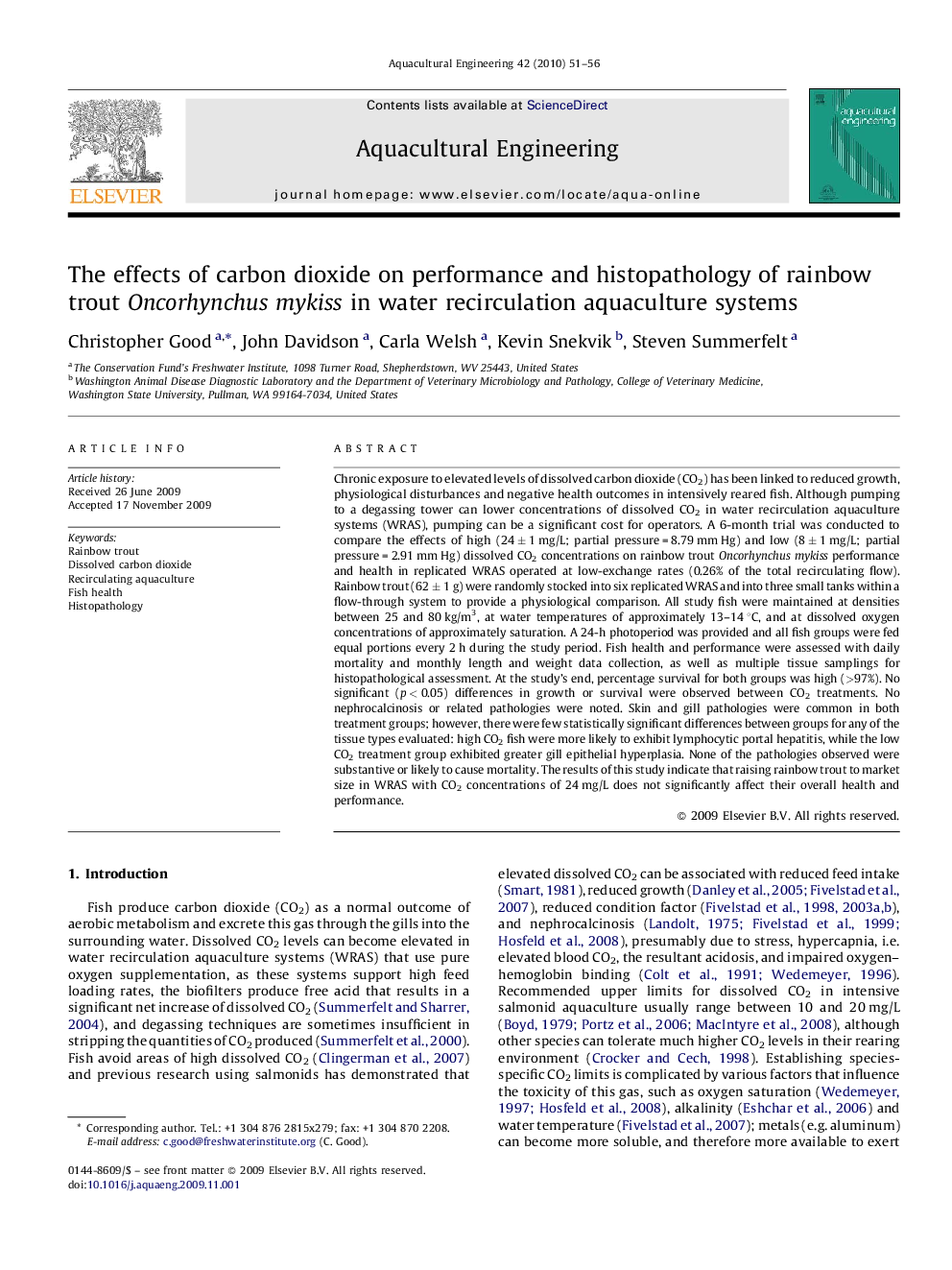| Article ID | Journal | Published Year | Pages | File Type |
|---|---|---|---|---|
| 6381483 | Aquacultural Engineering | 2010 | 6 Pages |
Abstract
Chronic exposure to elevated levels of dissolved carbon dioxide (CO2) has been linked to reduced growth, physiological disturbances and negative health outcomes in intensively reared fish. Although pumping to a degassing tower can lower concentrations of dissolved CO2 in water recirculation aquaculture systems (WRAS), pumping can be a significant cost for operators. A 6-month trial was conducted to compare the effects of high (24 ± 1 mg/L; partial pressure = 8.79 mm Hg) and low (8 ± 1 mg/L; partial pressure = 2.91 mm Hg) dissolved CO2 concentrations on rainbow trout Oncorhynchus mykiss performance and health in replicated WRAS operated at low-exchange rates (0.26% of the total recirculating flow). Rainbow trout (62 ± 1 g) were randomly stocked into six replicated WRAS and into three small tanks within a flow-through system to provide a physiological comparison. All study fish were maintained at densities between 25 and 80 kg/m3, at water temperatures of approximately 13-14 °C, and at dissolved oxygen concentrations of approximately saturation. A 24-h photoperiod was provided and all fish groups were fed equal portions every 2 h during the study period. Fish health and performance were assessed with daily mortality and monthly length and weight data collection, as well as multiple tissue samplings for histopathological assessment. At the study's end, percentage survival for both groups was high (>97%). No significant (p < 0.05) differences in growth or survival were observed between CO2 treatments. No nephrocalcinosis or related pathologies were noted. Skin and gill pathologies were common in both treatment groups; however, there were few statistically significant differences between groups for any of the tissue types evaluated: high CO2 fish were more likely to exhibit lymphocytic portal hepatitis, while the low CO2 treatment group exhibited greater gill epithelial hyperplasia. None of the pathologies observed were substantive or likely to cause mortality. The results of this study indicate that raising rainbow trout to market size in WRAS with CO2 concentrations of 24 mg/L does not significantly affect their overall health and performance.
Related Topics
Life Sciences
Agricultural and Biological Sciences
Aquatic Science
Authors
Christopher Good, John Davidson, Carla Welsh, Kevin Snekvik, Steven Summerfelt,
